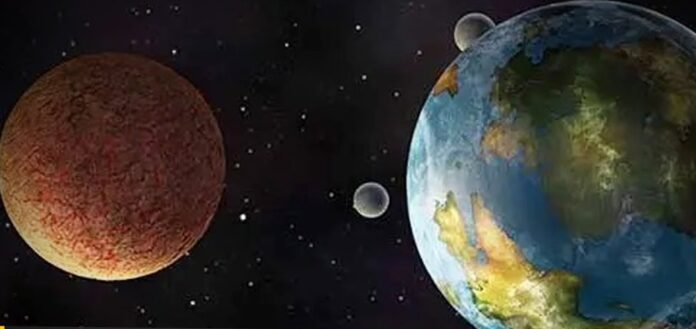Scientists claim strongest sign yet of life beyond Earth after detecting life-linked gases on K2-18 b
In a groundbreaking discovery, scientists have found what could be the strongest evidence yet of life beyond our solar system. Using the James Webb Space Telescope (JWST), researchers have detected the chemical signature of two gases, dimethyl sulfide (DMS) and dimethyl disulfide (DMDS), in the atmosphere of an exoplanet named K2-18 b, located 124 light-years from Earth.
On Earth, these gases are primarily produced by living organisms, including algae, leading scientists to speculate that K2-18 b could host microbial life. The discovery marks a pivotal moment in the search for extraterrestrial life, with experts calling it a “transformational” finding in the field of astrobiology.
Nikku Madhusudhan, a professor at the University of Cambridge’s Institute of Astronomy, emphasised the significance of the data. “We have entered the era of observational astrobiology,” he said, underscoring the importance of these findings. The gases detected by the JWST are not proof of life, but rather an indication of biological processes potentially taking place on the planet.
K2-18 b is a giant exoplanet, 8.6 times more massive than Earth and with a diameter 2.6 times larger than our own planet. It orbits in the “habitable zone” of its star, where liquid water could exist – a crucial factor for life as we know it. The detection of methane and carbon dioxide in earlier observations, coupled with these latest findings, strengthens the theory that K2-18 b could be a “hycean” world—a planet with a hydrogen-rich atmosphere and a vast, deep ocean that could harbour life.
Despite the exciting potential of these discoveries, not all scientists are ready to declare the planet a hotbed of microbial life. Christopher Glein, a principal scientist at the Southwest Research Institute in Texas, cautioned against jumping to conclusions. “The rich data from K2-18 b make it a tantalising world,” he said. “Yet, we must be very careful to test the data as thoroughly as possible.”
The James Webb Space Telescope, operational since 2022, has previously detected carbon-based molecules in K2-18 b’s atmosphere, marking the first time such molecules have been observed in a planet located in the habitable zone of its star. These molecules are typically associated with life on Earth, leading scientists to ponder whether K2-18 b could support similar processes.
Professor Madhusudhan pointed out that the only explanation for all the data collected thus far is that K2-18 b could indeed be teeming with life. “The only scenario that currently explains all the data obtained so far from JWST is one where K2-18 b is a hycean world teeming with life,” he asserted.
While the findings are exciting, further studies are required to confirm whether life truly exists on K2-18 b. In the coming weeks, independent researchers will scrutinise the data to ensure the accuracy of these groundbreaking conclusions.
As humanity continues its quest for signs of life beyond our planet, K2-18 b has emerged as one of the most promising candidates for further exploration. Whether it is home to life or simply another intriguing world remains to be seen, but for now, the possibility of life beyond Earth has never seemed closer.
